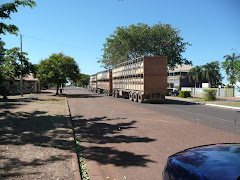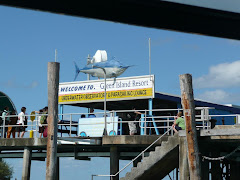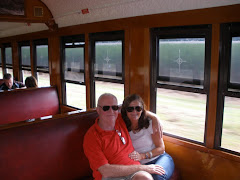
28 June - Kakadu to Darwin
The Top End really does have just two seasons. The HOT and wet and the HOT and dry. Temperatures inside our van are as high as 40C during the day, dropping to the mid twenties at night. It is a fairly dry heat but still far from comfortable. We’ve camped in the bush a couple of nights in the national park. The heat is bearable by sunset, but the mossies are something else! Just on sunset and sunrise it is almost impossible to go outside the van. Swarms of mossies gather on the screens, lined up as if at a buffet!
That said, Kakadu is a spectacular wilderness. Rugged escarpments rise from primeval green swamps, alive with birds, fish and, of course, crocs! We took a cruise on Yellow Water, part of the South Alligator River and spotted hundreds of birds and a half a dozen crocs. They were estuarine or salt water crocodiles. These monsters grow to more than 6 metres and weigh more than 1000 kg. Almost hunted to the point of extinction up to 1970, they were fully protected in 1974. Since then, they have multiplied and extended their range.

Aboriginal art galleries abound in the northern parts of the park. Some of the work is reputed to be more than 5000 years old. Interesting as it is, the actual age seems somewhat questionable. Practice amongst traditional owners in this area is to either paint over previous pictures or add to or maintain them. Realistically, this may not be too different from European art restoration practices, but it makes it difficult to accept these as truly original ancient works.
Not having visited Darwin before, we have been more than a little taken aback by the city. No more the rough frontier town, a modern, well laid-out and busy city greeted us.
Cyclone Tracy in 1974 was the second destruction visited upon Darwin, but it probably has done more to build the modern city of today than the first, the Japanese air raids that began on 19 February, 1942.
In 1974, Darwin was a city of more than 44,000 people. After the cyclone, the population was reduced to just a little above 10,000. The city was almost totally destroyed by Tracy, but its spirit was quickly regenerated as the new city grew. Today, virtually everything is new and fairly well planned. Large expanses of green belt, public parks and reserves separate the new suburbs that have developed well beyond the boundaries of the old city. The city centre is vibrant. In addition to the usual array of chain stores, Darwin has capitalised on its climate with many street side restaurants and bars. A US warship was in port today, so the town was really ‘jumping’.

!942 has never been forgotten here, though. People are very aware of just how isolated they still are and how clearly this was demonstrated on 19 February 1942, when over 100 Japanese planes attacked the city. Ships crowded into the harbour were the main targets, along with the RAAF and US bases. At the time of the attack, only 10 US P40 fighters were in the city and they were there only by chance. All 10 were lost in the initial attack. While the city was not damaged anywhere near as badly as in the 1974 cyclone, the fear of further Japanese attacks saw the city virtually abandoned by civilians. Sixty-three further attacks did occur as the Japanese tried to destroy bases from which they could be attacked as they pushed south into New Guinea.



























